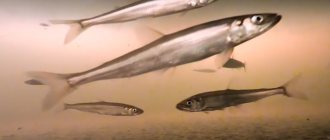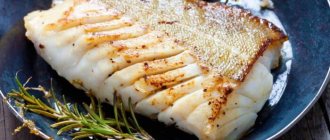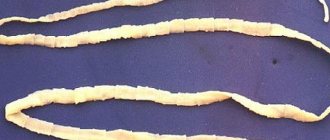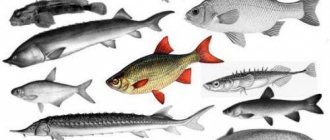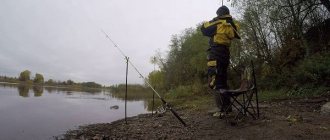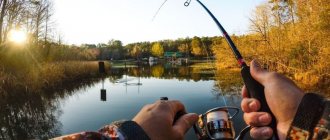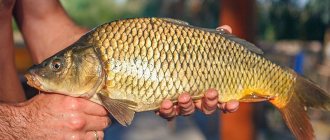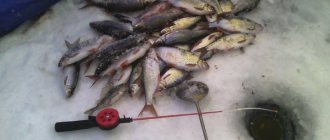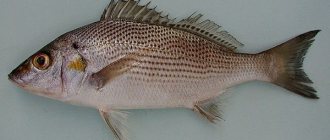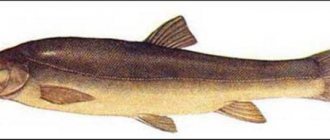Origin of the species and description
Photo: Omul
The Arctic species lives along the coast of the Northern Ocean. This fish is anadromous and rises to spawn along northern rivers in Alaska, Canada and Russia. Previously, the Baikal fish was considered a subspecies of the Arctic and was called Coregonus autumnalis migratorius. After genetic research, it turned out that the Baikal omul is closer to the common whitefish or herring whitefish, and it was identified as a separate species.
In connection with these studies, the hypothesis about the entry of Arctic omul from the rivers of the Arctic Ocean basin during the interglacial period, approximately twenty thousand years ago, is less tenable. Most likely, the Baikal omul appeared from ancestral forms that were found in the Oligocene and Miocene in warm-water lakes and rivers.
Video: Omul
Coregonus autumnalis or Ice Sea omul in Russia is found north of the river. Mezen to Chaunsky Bay, in addition to the Ob River, is found in the Ob Bay and in neighboring rivers, and in Penzhin.
Fish stocks can be divided according to their spawning grounds into:
- Pechora;
- Yenisei;
- Khatanga;
- Lena;
- Indigirskie;
- Kolyma
On the Arctic Sea coast of the North. America from Cape Barrow and the Colville River to Cornation Bay are found C. laurettae Bean, C. Alascanus, which are collectively known as C. autumnalis complex. The omul is a species of fish that lives off the coast of Ireland - Coregonus pollan Thompson.
An endemic from the deepest lake in the world has several ecoforms that can be grouped into:
- coastal;
- pelagic;
- bottom-deep-sea.
The Baikal omul can also be divided into several herds based on their spawning grounds:
- Chivyrkuiskoe (bottom-deep-sea);
- Selenga (pelargic);
- posolskoye (bottom-deep-sea);
- North Baikal (coastal).
Previously, the Barguzin coastal species also stood out, but due to the large amount of timber floated along the Barguzin River, it was almost exterminated, although this population was numerous. In the middle of the last century, it produced up to 15 thousand centners of catch.
The Ambassador flock is now produced artificially from incubated eggs. We can talk about subspecies that develop naturally in Baikal in the case of the North Baikal, Chivyrkui and Selenga omul. The entire population is now in a depressed state.
In Mongolia, the Baikal omul began to be bred in 1956 in Lake Khubuzgul, where it now lives and rises up the rivers to spawn. In other places where there have been attempts to breed this fish, there is no self-reproducing population.
Appearance and features
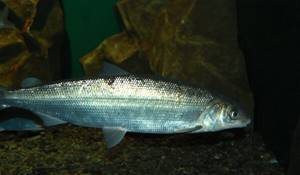
Photo: What an omul looks like
The omul, like other inhabitants of the middle layers of water, has a mouth at the end of the head, facing straight, that is, terminal, the jaws are equal in length and the lower one does not extend beyond the upper one, the head is small.
The center line of the body passes through the rather large eyes. Depending on the species and habitat of the Arctic and Baikal omul:
- gill rakers from 34 to 55 pieces;
- vertebrae 60-66 pcs;
- the number of scales on a line running along the side is 800-100 pieces;
- pyloric (blind) intestinal appendages 133-217 pcs.;
- In color, the omul can have a brownish or greenish tint on top, and the sides and belly can be silvery. There are dark spots on the dorsal fin and head of the Baikal omul.
The average size of an adult is 25-45 cm, the length can reach up to 63 cm, and the weight is 1-3 kg. Arctic inhabitants with a good layer of fat live on average about 10 years, the maximum known age is 16 years. On the river Lena omul can live up to 20 years.
The Baikal species has an average size of 36-38 cm, and can reach up to 55-60 cm. With small sizes, it weighs from 250 to 1.5 kg, occasionally 2 kg. The fish living in the north of the lake are smaller than the southern representatives. Its body is elongated and has a harmonious cigar-shaped shape, which determines movement in the water at good speed.
Interesting fact: It is known that previously individuals weighing 7-10 kg were caught on Lake Baikal, but the reliability of these facts has not been proven. The largest recorded specimen from the Selenga population weighed almost 5500 g, with a length of 500 mm.
Baikal fish:
- pelargic with a narrow caudal fin, are multi-stamened, 44-55 of them;
- coastal fish have a long head and a higher body, gill rakers are less common and there are fewer of them - 40-48 pieces. They are classified as medium-stamened;
- bottom-deep-sea—small-stamened individuals. Their stamens are long and hard, about 36-44 of them. The head is elongated on a high body with a high caudal fin.
Useful properties and nutritional value
It's a very tasty fish. Almost 20% consists of fat, especially marine subspecies. Omul meat is quickly digested (in 1-1.5 hours) and has great nutritional value. The fat in fish is located in the abdominal cavity, liver and subcutaneous layer. Evenly distributed throughout the fins and muscles.
Omul is rich in fatty acids, which reduce blood viscosity and improve the functioning of the heart and nervous system. Omul meat contains a lot of vitamin B. Much more than other fish. These vitamins are essential for the human nervous and reproductive system.
The mass fraction of omul bones is no more than 7%. Thanks to this, high-quality canned food is prepared from this fish. It is also used for dietary nutrition.
Where does omul live?
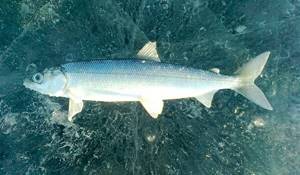
Photo: Omul in Russia
Semi-anadromous Arctic species emerge from rivers both into bays and use the entire coastal area of the northern seas for feeding. This is the northernmost inhabitant of all whitefishes, and it lives in waters of about 22% salinity, and can also be found in saltier waters. In summer, it can be found in the Kara Sea and off the coast of the New Siberian Islands.
The Baikal endemic species is found both in the lake and in the rivers flowing into it. In summer it lives in the middle or surface layers. In summer, Posolsky and Chivyrkuisky descend to depths of up to 350 m, in winter to 500 m. In winter, Selenga and Severobaikalsky go no deeper than 300 m.
In the r. Bolshaya Kultuchnaya, r. Abramikha, b. The Bolshaya Rechka, which flows into the Posolsky Sor, is visited by the Posolsky species to spawn. After spawning, the fish return to the lake. The pelargic multi-stamen Selenga omul rises up the Selenga for several hundred kilometers and enters its tributaries Chikoy and Orkhon. The coastal medium-sized omul goes to spawn in medium-length rivers: the Upper Angara, Kichera, Barguzin.
The multi-stanched deep-water omul rises to spawn in small tributaries and has a spawning route of up to five km on the Maly Chivyrkui and Bezymyanka rivers, up to 30 km on the Bolshaya Chivyrkui and Bolshaya Rechka rivers.
Now you know where omul is found. Let's see what this fish eats.
Fish omul
The omul fish is classified as a member of the salmon family. In turn, this species is divided into subspecies, which differ more in their habitat. In the waters of Lake Baikal there are four races of this fish.
- Appearance and varieties
- Places of distribution and habitat
- Nutrition
- Reproduction and spawning
- Commercial and economic value
- Links
- Video
Depending on where the fish lives and where it has chosen a place to spawn, these races are formed. Many people think that omul fish can only be found on Lake Baikal, but this is not at all true. This species has spread very widely in other waters, such as the environs of Lake Baikal, and also, oddly enough, in the Northern Ocean. It is worth noting that despite the fact that everyone considers the Baikal omul to be the main species, this is not the case. The common omul, as a species, lives specifically in the Arctic Ocean, and the fish that lives in other bodies of water is considered a subspecies descended from the main one.
Appearance and varieties
The body of the omul, flattened on the sides, is covered with small silvery scales. It has an elongated shape. It has a terminal mouth, the jaws of which are equal in length. The head is a continuation of the axis of the body. The omul has a whitish belly and a brownish-green or brown back. Epithelial distinctive tubercles are observed only in males during puberty. Some individuals have a thin stripe of a darker color along the abdomen.
An average size omul does not exceed 800 grams. In some cases, there are representatives up to one and a half kilograms. The length does not exceed half a meter. Life expectancy is up to 10-12 years. Cases have been recorded when the age of an individual reached 20 years.
Depending on the habitat, a distinction is made between the migratory Arctic and Baikal omul. Ichthyologists additionally distinguish the Malomorsky and Penzhinsky species.
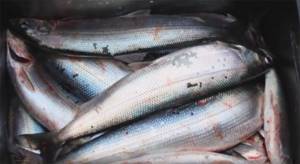
It is worth taking a closer look at the subspecies of omul that exist in nature.
The most famous omul living in Baikal is, accordingly, called Baikal. It has its own races: Posolsky, Barguzin and Malomorsky omul. In addition to these populations, there are also such species of omul as the Yakut omul (this is what can be found in the waters of the Arctic Ocean) and the Penzhinsky omul, which is almost identical to its relative the Baikal omul in biological characteristics. The only difference is the habitat – the Penzhin River. A very important fact is that the Penzhinsky omul is at risk of extinction, as local fishermen take excessive advantage of their position and uncontrollably catch a huge number of fish. Omul is the main fish of Siberia, so it’s worth considering whether it’s worth depriving yourself of such a calling card for the simple pleasure of eating.
Omul does not tolerate being in a standing position, so it is characterized by a migrated lifestyle. Biologists and local fishermen have found that omul goes to a maximum depth in the winter, which reaches more than 20 meters.
In warm seasons, fish swim out of the depths and actively begin to search for food at shallow depths. When the heat is at its highest, the omul comes closest to the surface of the water.
Omul is valuable for fishermen because it can be caught all year round. But during the spawning season, fishing is strictly prohibited and disobedience is punishable by law. It is worth noting that only experienced fishermen can catch omul, as this fish is very smart.
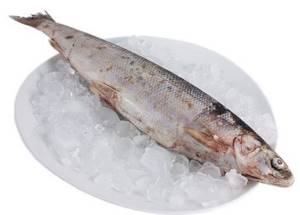
Places of distribution and habitat
Anadromous omul is found in many rivers of Russia, with the exception of the Ob. This subspecies is also found off the coast of North America from Bracket Bay to Cape Barrow. Despite the name, the Baikal omul, in addition to Lake Baikal itself, is found in the Yenisei Bay. Omul is less common in the northwest than in the southeast.
The fish prefers cool reservoirs with water saturated with oxygen. Feels good in fresh or lightly salted water. Moves at depth in flocks. In the cold season, it descends to a depth of 200 meters to overwinter. Fishermen choose places to catch where standing water connects with fast-flowing rivers. The places where schools gather are most often caused by layers of silt, in which crustaceans or insect larvae, which are favorite for omul, are found.
Nutrition
All salmon, including omul, stop eating during spawning. The rest of the time, from early summer to mid-autumn, the fish feed on young small fish, amphipods, smelt, zooplankton, invertebrates and benthic ones. Basically, the diet of omul is quite varied. In winter, the amount of food consumed is significantly reduced.
The commercial Siberian fish omul is considered to be in short supply due to the fact that it is not found everywhere. Belongs to the whitefish family from the order Salmonidae. Fishermen are attracted by tasty, nutritious meat, which is usually consumed smoked.
Reproduction and spawning
Sexual maturity of the omul occurs at the age of 6-8 years. Moreover, the desire to reproduce in males occurs earlier than in females. During spawning, salmon move a kilometer from the shore. The omul stays in the middle of the channel, avoiding shallow water. During the spawning period, the flock breaks up into small schools. As a rule, this happens in August. The water temperature for hatching eggs should not exceed 3-4 degrees. The duration of incubation of eggs depends on the characteristics of the reservoir. Omul prefers to lay eggs on a sandy and pebble bottom with a good current to ensure an influx of oxygen. The size of the eggs is up to 2.4 mm. Out of 10 thousand, up to 10 fish survive.
After throwing, the omul returns to its feeding grounds.
Fish spawn until they are 13-15 years old, after which the ability to spawn disappears.
Commercial and economic value
Fishing for omul is an exciting activity for experienced fishermen. Omul is a cunning fish and does not easily get hooked. To a greater extent, this representative of the fauna is an important commercial fish. Uncontrolled fishing has led to a decline in the population. Despite the bans and measures taken, the omul is still on the brink of extinction.
Nutritional value of omul fish
Fat makes up 20% of the total weight of fish, which is why it has high nutritional value. Marine subspecies are especially valued, the meat of which is well absorbed by the human body. Fish contains beneficial microelements and fatty acids that affect well-being, improve brain and heart function, and thin the blood. Vitamin B6, which is more abundant in omul than in many other fish, helps restore the functioning of eggs in women.
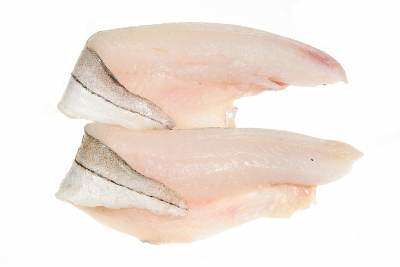
Only a tenth of the omul’s entire body is bones. Therefore, fish goes on sale in canned form. It is actively used for preparing dietary dishes.
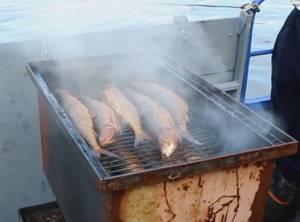
Links
Omul on Baikal (video) Investigation of Eduard Petrov - a net for omul (video) Omul on the Yenisei (video) Night fishing for omul (video) Industrial fishing for omul with a fixed seine on Baikal (video) Night fishing for omul “on the headlight” (video)
Video
+ Night fishing for omul
What does omul eat?
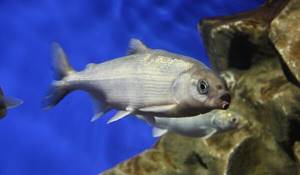
Photo: Omul fish
For the inhabitants of the Arctic Sea, the main menu consists of crustaceans and juvenile fish, these are amphipods, mysids, juvenile whitefish, polar cod, and smelt. Marine populations are very fatty; all the insides of the fish are filled with it.
Pelargic Baikal individuals at a depth of 300-450 meters find a rich diet consisting of zooplankton, small fish and juveniles. Part of the menu is benthos, that is, a variety of organisms living on the surface of the underwater soil and in its upper layers. The main component of the diet is Baikal epishura. Plankton, consisting of these small endemic copepods, represents approximately 90% of the lake's biomass
Adult omul prefers another endemic inhabitant of Baikal waters - Branitsky's macrohectopus. Local residents call this representative of the Gammarids Jurassic. This is the only known amphipod crustacean in the freshwater pelargy.
Interesting fact: To raise juvenile omul weighing 1 kg, you need 10 kg of epishura copepods. The same amount is needed to grow 1 kg of macrohectopus, which is used as food for adult omul.
If the concentration of epishura in the water is less than 30 thousand per 1 m3, then the omul completely switches to eating amphipods, and the fry continue to feed on them. There is another endemic of Baikal - the golomyanka. The juveniles of this translucent fish, consisting of fat, go to replenish the omul’s diet when there is a lack of copepods. In total, the Baikal omul menu includes 45 species of fish and invertebrates.
Depending on the time of year, the diet may vary:
- in summer - epishura, juvenile fish (gobies, polar cod, slingshot);
- in autumn - golomyanka, yellowwing goby, amphipods;
- in winter - amphipods, golomyanka;
- in spring – amphipods, juvenile gobies;
- The omul feeds on juvenile yellowfly goby, another endemic species, for 9 months of the year.
The goby itself spawns three times a year: in March, May and August, and lives throughout Lake Baikal, which provides the omul with a reliable food supply.
The menu of coastal forms of omul, which spend summer and autumn in shallow water, consists of:
- macrohectopus 33%;
- pelagic gobies 27%;
- zooplankton 23%;
- other objects 17%.
In bottom-deep-sea individuals living at a depth of 350 m, the nutritional composition is characterized by:
- macrohectopus 52%;
- juvenile fish 25%;
- benthic gammarids 13%;
- zooplankton 9%.
Varieties
Depending on their habitat, omuls are divided into the following subspecies:
Yakut
Many fish lovers know about the taste of omul and that it can only be obtained in Lake Baikal. But this opinion is wrong. It is an undeniable fact that the bulk of the Omul catch falls on Baikal. However, often fish can be found not only in the nearest rivers connecting to the lake by tributaries. One species of omul lives in the Arctic Ocean. This is where the Yakut omul lives. Its distinctive feature is that it chose a completely different habitat. The climate of the Arctic Ocean is significantly different from Baikal. The water in these places is very salty. And representatives of the crustacean class are completely different. All these factors significantly influenced the taste and aroma of this fish.
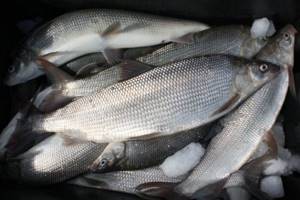
Many argue that the Yakut omul is fattier than the Baikal one. This is not at all surprising. Because to survive in cold waters, fish accumulate a lot of fat. In the human stomach, such fat is easily digested. That is why it cannot harm a person in any way. It is important to note that the Yakut omul contains much more vitamins contained in fish oil. The taste of this cold-resistant fish also has significant differences. It is extremely difficult to describe them in words. In order to understand the distinctive characteristics of two types of fish, it is necessary to be able to try them simultaneously. This is how it is possible to taste the superiority of each species.
The Yakut version of the omul has learned to survive well in harsh cold conditions. It does not prefer the distant depths of the Arctic Ocean due to the salinity of the water, but chooses for its habitat the coastal zones of those places near which there are large rivers flowing into the ocean. Here the water is fresher, and the flowing rivers fill the habitat of the omul with various delicacies: crustaceans, fry, and insect larvae. They allow the fish individual to build up fat in itself.
If we compare the spawning of both types of fish, it is absolutely identical. It also swims long distances, looking for a place to breed. The entire journey there and back takes the fish about three to four months, starting at the end of summer and ending at the beginning of winter. During this period of time, the fish manages to get to the spawning site, go through the laying of eggs, and return back. From spawning to spawning, an individual of the Yakut species takes a period of several years.
Yenisei
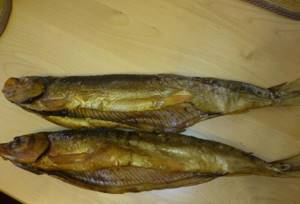
This subspecies got its name from the habitat of the individuals. They live in the coastal areas of the Yenisei Bay. They prefer to descend to a depth of less than 5 meters. At times when the current drives salty sea water into the bay, the Yenisei omul swims to the southern part of the bay.
If we consider what the omul eats, we can distinguish the following “delicacies”: gammarus, mysids and crustacean plankton.
The Yenisei omul begins to prepare for spawning in advance. Already at the beginning of July. To reproduce, it swims to a distance of up to 1.5 thousand kilometers, like other members of the family. Spawns once every few years.
In terms of taste, it is in no way behind its relatives. Fresh meat is tender and white. When cooking, it can be used boiled, fried or steamed.
How much does a finished dish cost? The price of the finished dish is decent. Every gourmet can taste this delicious delicacy.
Northern
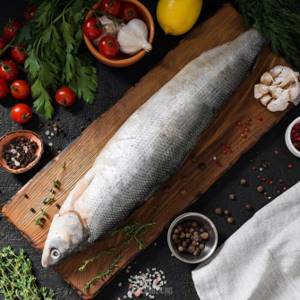
Settles in the north of Lake Baikal. That's why it got its name. A distinctive feature of this species is that it lives mainly in warm coastal waters, full of waste products. Average weight is 250 grams. Body length can reach 40 centimeters. The basis of the body is bone, not cartilage. Northern omul meat is more tender than all other options. True connoisseurs of fish should try and savor the aromas of this particular fish. The price of the dish will please you.
Arctic

Another subspecies of this fish is the Arctic omul. You can see it in more detail in the photo. Individuals of this subspecies are also valued in different world cuisines. The taste of this fish is amazing. The meat is very tender, white, and has no bitterness. On average, each fish of this genus weighs approximately 1 to 2 kilograms. These inhabitants of sea latitudes can be found in the area of the Arctic Ocean.
Reproduction of the Arctic omul occurs, like its other “relatives”, at the same time.
Fresh fish contains a lot of fatty substances. However, despite this, fish is a low-calorie type. This fish is easily and quickly perceived and processed in the human body.
Features of character and lifestyle
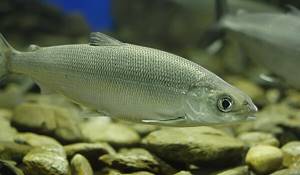
Photo: Baikal omul
Omul lives a long time and produces offspring many times, although representatives of the Arctic Sea often skip spawning and can reproduce only 2-3 times. The largest population of Baikal omul in the southern part of Lake Baikal belongs to the Selenga population, since it ascends this river and some other neighboring tributaries of the lake to spawn. After summer feeding, schools from the Selenginsky shallow waters rise to spawn from the end of August to the end of November, at a water temperature of 9-14°. The herd can reach 1.5 - 7 million heads, and the number of eggs laid is 25-30 billion pieces.
For the winter, the omul goes into the depths, depending on the species, into the Small Sea, the Verkhne-Angarsk, Selenga shallow waters, into the Chevyrkuisky and Barguzinsky bays (up to 300 m), the Posolsky omul in the Priselenginsky shallow water (200-350 m).
In spring, fish move to the shore. She migrates throughout the year in search of food. When the water off the coast warms up and rises above 18°, the number of epishura decreases, the omul moves into the open lake, where the temperature does not rise above 15°. At this time, it is here that mass reproduction and growth of pelargic species occurs.
The Severobaikalsky omul reaches maturity in the fourth year, the Selenginsky, Barguzinsky, Chivyrkuisky - in the fifth, Posolskaya - in the seventh. At this age, individuals join the spawning school. During the spawning period, the fish does not eat, and after it begins to feed heavily (fishermen call this zhor), gaining fat.
Interesting fact: Omul can give birth to offspring for up to 15 years, but, having lost this ability, continues to join the spawning stock.
Description
Omul is a semi-anadromous fish. The body is elongated, covered with small, tightly fitting silvery scales. The mouth is small, the jaws are of equal length. There is an adipose fin. Silver body color. The back has a brownish-green tint, the belly is light, the sides and fins are silvery. During puberty, males develop epithelial tubercles. A dark thin strip may run along the sides.
Omul is a small fish, usually does not exceed 800 grams. But sometimes large individuals come across. Their length reaches up to half a meter, and their weight is more than one and a half kilograms. The fish lives no more than 18 years. On average, the lifespan of an omul is 11 years.
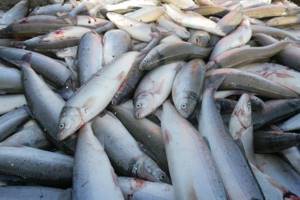
Social structure and reproduction
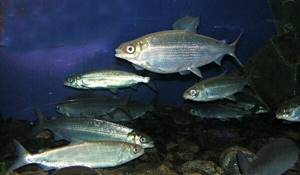
Photo: Arctic omul
Reproduction in omul occurs annually with the onset of sexual maturity. Autumn spawning fish travel high along rivers (except for deep-sea species) up to a thousand km, bypassing shallow waters and shores.
Spawning occurs in fast-flowing places (velocity up to 1.4 m/s), but not in the core of the current, where there is a pebble or rocky bottom. The spawning process occurs at night. The eggs, 2 mm in size, are orange in color. The number of eggs in young females is 5 - 15 thousand, in adults - 20 - 30 thousand. Bottom eggs are attached to the ground surface. The development of embryos at a temperature of 0 -2° takes about 200 days.
The Posolsky omul enters the rivers twice. The first school is in September at a temperature of 10-13° and in October at 3-4°. From late April to early May, larvae emerge, measuring 10-12 mm and weighing 6 mg. The water temperature at this time is from 0° to 6°. After it warms up to 11°C and above along the shores of Lake Baikal, the larvae degenerate into fry and spread throughout the lake.
The fry are carried by river waters to Posolsky Sor. For about a month they eat plankton, making jerks of up to 5 mm. The menu consists of 15 groups of 55 species of invertebrates. At the last stage of development, the fry is 31 -35.5 mm in length. By the fifth year of life, the omul matures, reaching a length of 27 cm and a weight of 0.5 kg.
In October - December, before freeze-up, the North Baikal and Selenga populations go to spawn. The eggs are deposited within a month at a water temperature of 0 - 4°. When the temperature decreases at the beginning of embryogenesis, development accelerates and the process can take 180 days.
The size of fish that go to spawn for the first time differs among populations:
- Selenga - 33-35 cm 32.9-34.9 cm, 350-390 g;
- Chivyrkuiskaya - 32-33 cm, 395 g;
- North Baikal - 28 cm, 265 -285 g;
- Posolskaya - 34.5-35 cm, 560 - 470 g.
The number of schools going to spawn also depends on the year and population, a total of 7.5 - 12 million heads, including in the Upper Angara and Kichera - up to 1.2 million, Selenga - up to 3 million. The Selenga omul lays the largest amount of eggs - up to 30 billion, the Severobaikalsky - up to 13 billion, the Posolsky - up to 1.5 billion, the Chivyrkuisky - up to 1.5 billion pieces. The eggs survive until the larvae emerge by 5-10%. After the end of embryonic development, up to 30% of the larvae return to the lake.
Interesting fact: Out of a hundred eggs obtained during artificial incubation at the Posolsky fish hatchery, only one fish reaches the age of sexual maturity. Under natural conditions, out of 10,000 eggs laid in clean rivers under optimal conditions, 6 survive to maturity.
Declining omul numbers
Over the past few years, the number of omul in Baikal has decreased. The volume of fish caught on an industrial scale is almost half the amount provided under the quota.
According to the Baikal branch of the State Fishing Center, on average, for the industrial catch of omul in the Irkutsk region, a quota of 300-350 tons per year is allocated. Let us note that over the past few years, the development of this volume has not crossed the 60% mark; for example, in 2013 the figure was 59%. In addition, Rybnadzor admits that some enterprises engaged in fishing also inflate their figures in order to maintain a license to operate - therefore, in fact, the volumes of fish caught may be even less.
The head of the territorial department of control, supervision and fisheries protection for the Irkutsk region, Rinat Enin, explains the reduction for the following reasons. In the last two or three years, the omul in Baikal has changed its migration routes; it has stopped entering large spawning rivers, in particular the Selenga and Barguzin, and the Small Sea. This is due to the warming of the water in Lake Baikal - the fish began to stay at depth, formally in the central part of the lake. In addition, there are many cormorants that feed on omul and can catch fish at a depth of several meters. In addition, seals, whose population has also increased, are also involved in the decline in the omul population in the lake. Although the seal does not catch the omul, since it cannot catch up with it, it is capable of breaking the nets with fish.
Irkutsk ecologist Vitaly Ryabtsev adheres to a different point of view: it is not cormorants and seals that are to blame for the fact that there is little fish in the northeast of Lake Baikal. According to the scientist, poachers are mainly responsible for the problem of fish disappearance.
There are fewer omul in Baikal: its spawning stock has decreased over the past ten years from approximately 5 to 3 million individuals. Residents of the Olkhon region, many of whom make money from these gifts of nature, sounded the alarm. However, Irkutsk scientists note that they foresaw a reduction in numbers back in 2003. Experts say the reason is the development of the tourism industry and the disorderly construction of tourist centers on the shores of the Small Sea and Olkhon. As a result, the population of gobies, which provide food for omul, has significantly decreased in this area.
It is currently impossible to say that it was the increase in the number of cormorants that influenced the decline in the population of the Baikal omul. First we need to explore its role in the natural environment of the lake. This opinion is shared by representatives of the Irkutsk scientific community, following the ecologist Vitaly Ryabtsev, who has repeatedly spoken out in defense of the bird.
Expert opinions
Director of LIN SB RAS, academician Mikhail Grachev:
There really are a lot of cormorants on Lake Baikal, no one knows the reasons for this. The belief that this bird eats a lot of omul has existed for a long time; fishermen shot cormorants because of this back in the 1930s. But there is no scientific evidence that it was cormorants that caused the decline in fish populations. In my opinion, poachers who catch omul cause much more harm.
Ornithologist Viktor Popov:
In the Irkutsk region, the great cormorant is now listed in the Red Book. However, this was not always the case - in the 19th century there were a lot of these birds, there were tens to hundreds of thousands of pairs. Then, for unknown reasons, it began to disappear, which led to its inclusion in the Red Book in 1950-60. However, since 2006 it began to reproduce. The cormorant may have migrated from northern China and Mongolia, where it is usually found, due to droughts. Now no one knows how many cormorants there are on Lake Baikal, since no one has conducted scientific research. But three years ago it became clear that fishermen would have complaints.
However, it cannot be argued that it was the cormorant that caused the decline in omul numbers. First, you need to carry out a set of studies - to establish the number of birds, to understand what they eat, since some ecologists believe that it is omul, others - goby. Only after this can the question of excluding the cormorant from the Red Book and regulating it be raised. While there are no facts, everything else is emotions, both on the part of the cormorant’s defenders and on the part of opponents. In Buryatia, they fell for these emotions and made it a hunting species. Although such a decision is absurd, since this species does not represent any commercial value. I think that in the Irkutsk region it will not come to this.7
Natural enemies of omul
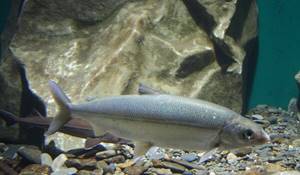
Photo: What an omul looks like
One of the enemies of omul can be considered the Baikal seal, although its main menu is the golomyanka, it is not averse to feasting on omulk. Fishermen are guilty of the Baikal pinniped; although the seal loves the omul, it is difficult to catch it in clear water. That’s why the seal prefers to get into a net where there are already a lot of fish.
Another enemy is Baikal cormorants. These birds feed on fish. Now, due to environmental measures, the number of these birds has increased, but still they cannot significantly influence the fish population. Bears can also catch omul, although it avoids small places and mountain rifts, where clubfoot fish most often fish, but when a large school comes, something falls into the bear’s paws. Otters successfully hunt omul.
The project for the resettlement of peled for commercial production poses a danger to the reproduction of omul. Firstly, this fish, like omul, feeds on plankton, which means it will compete for food supply. Secondly, when peled are caught, omul will also be taken, which will lead to a decrease in its population.
The main enemy of the omul is man and his activities. This fish has always been the object of fishing, but by the end of the 60s of the last century it was noticed that the number of valuable fish had fallen sharply, and in 1969 a ban on its fishing was introduced. Ten years later the ban was lifted. From October 1, 2021, it is again prohibited to hunt omul, as its biomass has sharply decreased over the past two decades and is about 20 thousand tons.
In the Chivyrkuisky and Barguzinsky bays there are two main fishing periods when the omul comes out into shallow water: the time when the ice begins to melt and before the first ten days of July, the second, when the omul is caught at great depths (up to 200 meters) with nets, after freeze-up. At this time, poaching is especially rampant. Until the 90s of the last century, deep nets were not used, catching omul from small and medium depths, and the fish went to wintering pits in larger quantities.
Harm to the omul and the entire Baikal ecosystem has been caused by timber rafting for a long time. Deforestation and environmental pollution also had a negative impact on the omul population. Since 1966, a pulp and paper mill operated on the shores of Lake Baikal, which was closed only in 2013. A similar plant operates in Selenga.
Fishing for omul
Whitefish fishing is carried out all year round, with the exception of the spawning period. In the warm season, fishing rods and reels or spinning rods are used, for example, jigs from the shore. Amphipods, crustacean meat, live bait (smelt, goby, arctic cod) and small moving spoons are used as bait for omul.
The best time for biting is early morning or evening twilight, but experienced fishermen often practice night hunting from a boat, illuminating the water with a powerful flashlight. The light beam collects a cloud of planktonic crustaceans, which act as a tempting bait for fish.
The optimal tackle for catching omul is a rod 2.20-3.0 m long, equipped with a spinning reel with a 150-meter supply of fishing line 0.3-0.35 mm thick. When bottom fishing, a sinker weighing 25-40 g is used, which interacts with a rig of several leashes with flies or hooks with bait. Successful winter fishing for omul is also associated with the use of gear with a large number of artificial flies (6-10) in various shades of red.
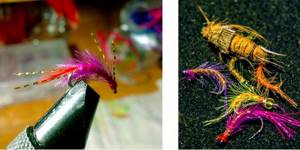
It is important to take into account the transparency of the ice, which allows cautious fish to see a person and refuse the bait. When fishing for omul in winter, you need to pay attention to the weather. If there is strong wind or a sharp change in meteorological conditions, you should not hope for a good catch.
The fish bites quite confidently - it grabs the bait in its mouth and lifts itself a little with it, which leads to sagging of the fishing line, so the hook should be sweeping, but smooth enough not to tear the soft lips of the omul.
